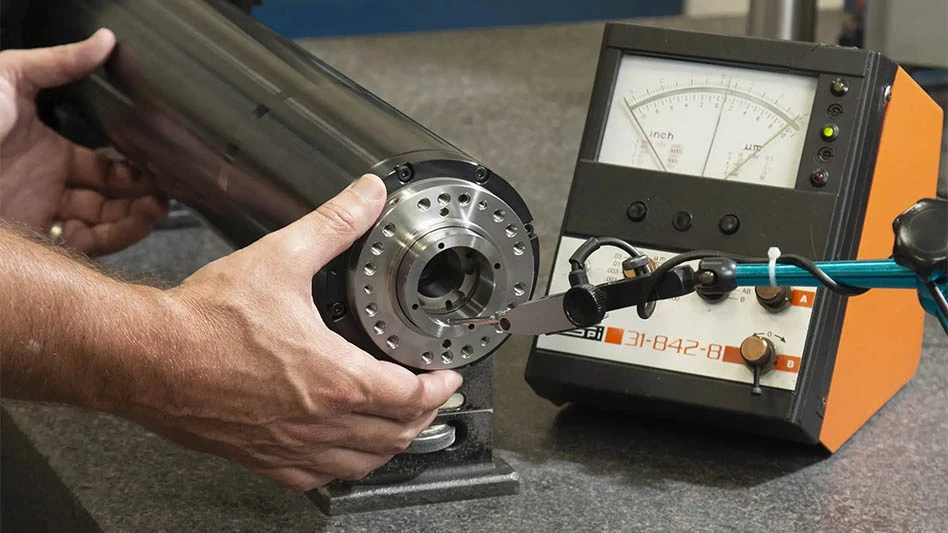
GE Aviation is investing more than $200 million to construct two factories on 100 acres in Huntsville. (Provided)
Evendale, Ohio – The amount of CMC raw material used for GE Aviation will be approximately 20x greater this year than it was in 2007. To get there, the business is building the blueprint to CMC industrialization.
GE Aviation is on the final phase to create its vertically integrated, new material system in the United States.
By 2020, GE Aviation is projected to have more than 750 U.S. employees dedicated to its CMC industry.
In just 10 years, GE Aviation has spent more than $1.5 billion to bring advanced CMC technology to market. Beyond GE's Global Research Center in Niskayuna, New York, this investment includes four production facilities:
- A CMC laboratory at its headquarters in Evendale, Ohio, to develop CMC production designs
- A low-rate production facility in Newark, Delaware, for CMC raw material and components
- A full-rate production facility in Asheville, North Carolina, to mass-produce CMCs, including the static turbine shrouds flying in CFM LEAP engines
- Now, GE Aviation is constructing the last significant piece of the CMCs industrialization puzzle – a full-rate production raw material facility in Huntsville, Alabama
Once fully operational, Huntsville will produce up to 20 metric tons (20,000kg) of CMC material a year. One CFM LEAP engine uses approximately 1kg of CMC material.
GE Aviation is investing more than $200 million to construct two factories on 100 acres in Huntsville. One plant will mass produce silicon carbide (SiC) ceramic fiber, the first high-volume production operation in the United States. Supported by $21.9 million in funding from the U.S. Air Force Research Lab Title III Office, this plant will dramatically increase U.S. capability to produce SiC ceramic fiber capable of withstanding temperatures of 2,400°F.
The adjacent GE factory on the same campus will use the SiC ceramic fiber to make unidirectional CMC prepreg necessary to fabricate the CMC components.
"We continue to make great progress," Huntsville site leader Jon Lyford said. "The engineering and construction teams are on track to start placing process equipment by October. The CMC prepreg facility commissioning will be complete in the summer of 2018. The CMC fiber facility commissioning remains targeted for the spring of 2019."
The GE Aviation Huntsville team is 24 employees but growing rapidly. Once fully operational, the Huntsville facilities will employ up to 300 people.
"There is a lot of excitement surrounding the Huntsville facility," CMC senior production manager Brian Dix said. "We had people that wanted to sign up to work at the high-volume facility before we even knew where it was going to be located. That speaks volumes of the excitement building here."
The only other large-scale SiC ceramic fiber factory is operated by NGS Advanced Fibers Co. in Toyama, Japan. Formed in 2012, NGS is a joint company of Nippon Carbon, GE, and Safran of France. The U.S. SiC fiber plant will license fiber-producing technology from NGS Advanced Fibers Co.
NGS is in the final qualification phase of its expanded factory to increase capacity to meet growing worldwide demand. The SiC fiber plant in Huntsville will complement the growing capacity at NGS.
Advanced Silicon Carbide Fiber, a GE Aviation joint venture, will sell fiber manufactured in Huntsville to the Department of Defense, GE businesses, Safran, and other external customers. The NGS partners will have the opportunity to become equity partners in the Huntsville plant.
CMCs in the engine can translate into millions of dollars of annual savings for airline fleets.
A 1% reduction in fuel consumption can save more than $1 million a year for commercial air carriers. This next-generation CMC material technology being produced by GE Aviation are expected to improve fuel efficiency 1% to 2%.
For more than 20 years, scientists at GE's Global Research Centers and GE's industrial businesses have worked to develop CMCs for commercial applications.
The LEAP engine, developed by CFM International, the 50/50 joint company of GE and Safran Aircraft Engines of France, is the first commercial jet engine to use CMCs in the high-pressure turbine section. With more than 12,200 orders and commitments, it is already the best-selling engine in GE history. Valued at $170 billion at list price, LEAP took flight commercially in the Airbus A320neo last August and is scheduled to enter service later this year, powering the Boeing 737 MAX.
Presales for the GE9Xare listed at 700 engines and counting. GE9X will power Boeing's 777X beginning in 2020 and contain five CMC parts.
GE is also incorporating CMC components in advanced military engines including the GE3000 for the U.S. Army's ITEP program, as well as GE's advanced turboshaft demonstrator FATE (Future Affordable Turbine Engine). CMCs are currently being evaluated for upgrades to existing engines like the T700 helicopter and GEnx engines.
Source: GE Aviation
Latest from Aerospace Manufacturing and Design
- AviLease orders up to 30 Boeing 737 MAX jets
- 256-piece general maintenance tool kit
- JetZero all-wing airplane demonstrator achieves milestones
- Cermet indexable inserts for medium turning operations
- Trelleborg acquires Aero-Plastics
- Industrial automation products, enclosed encoders
- #61 - Manufacturing Matters: CMMC roll out: When do I need to comply?
- AIX shows aircraft interiors are a strategic priority for global airlines





